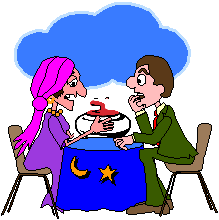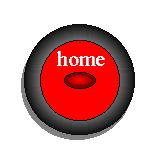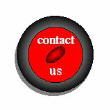| BACK LlNE | the line across the back of the house. Stones that completely cross this line are not inplay.
|
| BITER | a stone touching but not fully in the house. To see if a stone is actually touching the house, a 6 foot 'loiter stick' can be used from the 'tee'.
|
| BLANK END | a scoreless end -- no stones resting in the house.
|
| BONSPIEL | a tournament among a number of curling teams.
|
| BROOM | a sweeping device made from corn straws or synthetic material used in a swinging levered motion.
|
| BRUSH | a sweeping device with animal hairs or synthetic material used in a scrubbing motion.
|
| BURNED STONE | a stone that is touched by a player or his equipment usually during sweeping. Players so touching a stone will advise that the stone has been touched. Subject to the discretion of the opposing skip it is removed from play.
|
| BUTTON | the scoring circle in the house which is 0.3048 meters (1 foot) in diameter.
|
| CENTRE LINE | a line running down the middle of the ice from hack to hack.
|
| CHAP & LIE | a stone played in such a manner as to contact the object stone on the side and roll stone(s) to desired positions. see 'Wick & Roll'
|
| COME AROUND | a played stone that is thrown with draw weight, and curls past and comes to rest behind a guard.
|
| CORNER GUARD | a stone played short of the house which does not protect the four foot circle.
|
| COUNTER | any stone in the rings or touching the house that is a potential point.
|
| CURL | the bending action of the stone's path as it travels down the ice.
|
| DOUBLE TAKE OUT | a played stone which removes 2 stones from play.
|
| DRAW | 1. a played stone which comes-to rest in the
house; or
2. a schedule of curling games to be played(draw sheet/draw time)
|
| EIGHT FOOT | the scoring circle in the house which is
2.4384 meters (8 feet) in diameter.
|
| END | the alternate playing of all 16 stones in one
direction by opposing teams; a game normally consists of 8 or 10 ends.
|
| FALL | slanted ice that causes a stone to move in a
sideways direction opposite to the imported turn.
|
| FOUR FOOT | the scoring circle in the house which is
1.2192 meters (4 feet) in diameter.
|
| FREE GUARD ZONE | the area from hog line to the tee line
excluding the house. No stones in this area (often called 'guards') may be removed from
play until after the 3rd stone of the end comes to rest. (In the rest of the World, no
opposition stones in this area may be removed from play until after the 4th stone of the end
comes to rest.) (FGZ)
|
| FREEZE | a played stone which stops resting against the
front face of another stone.
|
| FRONT RING | the area of the twelve foot circle in front of
the tee line.
|
| GUARD | a stone positioned in such a matter as to
protect another stone, or potentially provide protection for a stone played later in the end.
|
| HACK | a foot hold in the ice from which the thrower
pushes off when throwing a stone; right-handed players use the left foot hold (hack);
left-handed players use the right foot hold (when facing down the ice).
|
| HAMMER | slang term for last rock advantage in an end.
|
| HEAVY | a played stone with more than the desired weight (travelling too quickly).
|
| HEAVY ICE | ice where a played stone requires more effort from the thrower. Although this is sometimes called "slow ice", the stone actually takes
less time to travel down the ice as the friction between ice and stone is very high, and the stone does not glide easily.
|
| HIT & ROLL | a played stone which, after removing the
object stone from play, rolls to the desired location. (example: rolls behind a guard)
|
| HOG LINE | a line on the ice 10.0584 meters (33 feet)
from the back line. Stones must be clearly released by the thrower before the stone
reaches the nearer hog line, Stones which do not completely cross the farther hog line are
not in the playing area unless they contact a stone in the playing area.
|
| HOGGED STONE | a played stone which does not completely cross
the farther hog line -- it must be removed from play, except when it touches a stone
already in play.
|
| HOUSE | the scoring area of concentric circles~ the
outermost circle being 3.6576 meters (12 feet) in diameter. There is one house at each end of
the sheet of ice.
|
| IN-TURN | the hand and arm action which causes a stone
to rotate for a stone delivered by a right-handed thrower, a clock-wise spin is
imparted to the stone; a left-handed thrower imparts a counter clock-wise spin.
|
| KEEN ICE | ice where draws to the tee line take less
effort for the thrower, Although this is sometimes called "fast ice", the stone
actually takes more time to travel down the ice as the friction between ice and stone is
very low, and the stone glides for a longer period of time.
|
| LAST ROCK | the advantage gained by the team throwing the
last stone in an end, Determined in the first end by a coin toss, or predetermined in a
championship draw, in later ends, the team that scored in one end throws the first stone
of the next end, giving the opponent the last rock advantage.
|
| LEAD | the player who throws the first two stones for
his/her team each end.
|
| LIGHT | a played stone with less than the desired weight (travelling too slowly).
|
| MATE | alternate name for the position of "Third"
(term originates in the Atlantic provinces of Canada)
|
| NARROW | a played stone that is thrown "inside" the
target line from the hack area to the skip's broom. The delivered stone is travelling down
a line closer to the target area (for a draw) or opponent's atone (on a takeout), and
probably will need to be swept to delay the curl and achieve the desired result.
|
| NEGATIVE ICE | used on severely slanted ice; the amount of
ice indicated on a shot which the stone will lose (fall) against the requested turn,
|
| NOSE HIT | a played stone after which removing another
stone from play rolls neither left or right.
|
| OUT-TURN | the hand and arm action which causes a stone
to rotate for a stone played by a right-handed thrower, a counter clock-wise spin
is imparted to the stone; a left-handed thrower imparts a clock-wise spin.
|
| PEBBLE | water droplets sprinkled on the ice surface
prior to a game. Once frozen, they become the surface over which the stones glide,
|
| PEEL | played stone which after removing another
stone from play rolls out of the playing area itself.
|
| PORT | a space between two stones through which a played stone may pass.
|
| PUSH BROOM | see "Brush"
|
| RAISE | a played stone which strikes another stone so
as to move (promote) that stone to the desired location.
|
| SECOND | the player who throws the 3rd and 4th stones
for his/her team each end.
|
| SHEET (OF ICE) | one ice playing area approximately 44.501 meters (146 feet) long and 4.318 meters (14 feet, 2 inches) wide.
|
| SHOOTER | the thrown stone.
|
| SHOT STONE | the stone that is closest to the tee (centre of the house).
|
| SKIP | the player who throws the last t;o stones of
each end for his/her team; the Skip usually directs the strategy of the game for his/her
team, as well.
|
| SLIDER | a low friction material applied to the bottom of the sliding shoe (left shoe for right-handed throwers; right shoe for left-handed throwers)
|
| TAKE OUT | a played stone which removes the object stone from play.
|
| TEE | the hole in the centre of the house used for measuring .
|
| TEE LINE | the line that passes through the tee (in the
centre of the house) across the sheet, parallel to the back and hog lines.
|
| THIRD | the player who throws the 5th and 6th stones for his/her team each end. Also called Vice-Skip' or Mate'.
|
| TWELVE FOOT | the outermost scoring circle of the house
which is 3.6576 meters (12 feet) in diameter.
|
| VICE-SKIP | see "Third" (also called "Mate" (Atlantic Canada)). This term is commonly used in Ontario.
|
| WEIGHT | an amount of force required to propel a stone
a specific distance.
|
| WICK & ROLL | a stone played in such a manner as to contact
the object stone on the side and roll stone(s) to desired positions. also "Chap & Lie"
|
| WIDE | a played stone that is thrown "outside" the
target line from the hack area to the skip's broom. The delivered stone is travelling down
a line further away from the target area (for a draw) or opponent's stone (on a takeout),
and probably will need to curl more than expected to achieve the desired result.
|
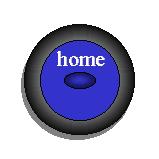

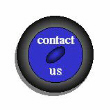



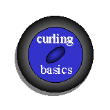
 Curling's origins go back to the 16th century in Scotland. A
wide variety of curling stones, which can be dated, have been
recovered from lochs and ponds to affirm this date,
In its early stages, curling was an 'impromptu' game played on
outdoor natural ice with teams varying in size from a few hardy
souls up to a dozen or more on each side, And, as with many early
games, one might say the rules were made up 'on the spot'.
Curling has since become a sport played worldwide, and in
fact, has become a full medal Olympic sport. The rules of the sport
have matured over time as well, to keep play fair and entertaining.
Curling's origins go back to the 16th century in Scotland. A
wide variety of curling stones, which can be dated, have been
recovered from lochs and ponds to affirm this date,
In its early stages, curling was an 'impromptu' game played on
outdoor natural ice with teams varying in size from a few hardy
souls up to a dozen or more on each side, And, as with many early
games, one might say the rules were made up 'on the spot'.
Curling has since become a sport played worldwide, and in
fact, has become a full medal Olympic sport. The rules of the sport
have matured over time as well, to keep play fair and entertaining.

